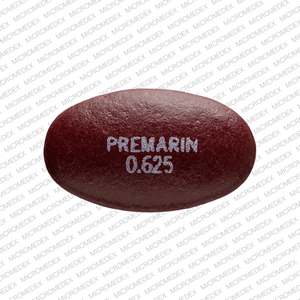Conjugated estrogens Interactions
There are 358 drugs known to interact with conjugated estrogens, along with 14 disease interactions, and 3 alcohol/food interactions. Of the total drug interactions, 34 are major, 304 are moderate, and 20 are minor.
- View all 358 medications that may interact with conjugated estrogens
- View conjugated estrogens alcohol/food interactions (3)
- View conjugated estrogens disease interactions (14)
Most frequently checked interactions
View interaction reports for conjugated estrogens and the medicines listed below.
- Ambien (zolpidem)
- Aspirin Low Strength (aspirin)
- Calcium 600 D (calcium / vitamin d)
- Celebrex (celecoxib)
- CoQ10 (ubiquinone)
- Crestor (rosuvastatin)
- Cymbalta (duloxetine)
- Fish Oil (omega-3 polyunsaturated fatty acids)
- Lantus (insulin glargine)
- Lasix (furosemide)
- Lipitor (atorvastatin)
- Lyrica (pregabalin)
- Metoprolol Succinate ER (metoprolol)
- Metoprolol Tartrate (metoprolol)
- MiraLAX (polyethylene glycol 3350)
- Nexium (esomeprazole)
- Paracetamol (acetaminophen)
- Prilosec (omeprazole)
- Protonix (pantoprazole)
- Singulair (montelukast)
- Symbicort (budesonide / formoterol)
- Synthroid (levothyroxine)
- Topamax (topiramate)
- Vitamin B12 (cyanocobalamin)
- Vitamin C (ascorbic acid)
- Vitamin D2 (ergocalciferol)
- Vitamin D3 (cholecalciferol)
- Vyvanse (lisdexamfetamine)
- Xanax (alprazolam)
- Zyrtec (cetirizine)
Conjugated estrogens alcohol/food interactions
There are 3 alcohol/food interactions with conjugated estrogens.
Conjugated estrogens disease interactions
There are 14 disease interactions with conjugated estrogens which include:
- abnormal vaginal bleeding
- carcinomas (estrogenic)
- hypercalcemia in breast cancer
- hypertension
- thromboembolism/cardiovascular
- hepatic neoplasms
- angioedema
- gallbladder disease
- hyperlipidemia
- hypoparathyroidism
- liver disease
- fluid retention
- glucose intolerance
- thyroid function tests
More about conjugated estrogens
- conjugated estrogens consumer information
- Compare alternatives
- Reviews (95)
- Side effects
- Dosage information
- During pregnancy
- Drug class: estrogens
- En español
Related treatment guides
Drug Interaction Classification
| Highly clinically significant. Avoid combinations; the risk of the interaction outweighs the benefit. | |
| Moderately clinically significant. Usually avoid combinations; use it only under special circumstances. | |
| Minimally clinically significant. Minimize risk; assess risk and consider an alternative drug, take steps to circumvent the interaction risk and/or institute a monitoring plan. | |
| No interaction information available. |
See also:
Further information
Always consult your healthcare provider to ensure the information displayed on this page applies to your personal circumstances.


